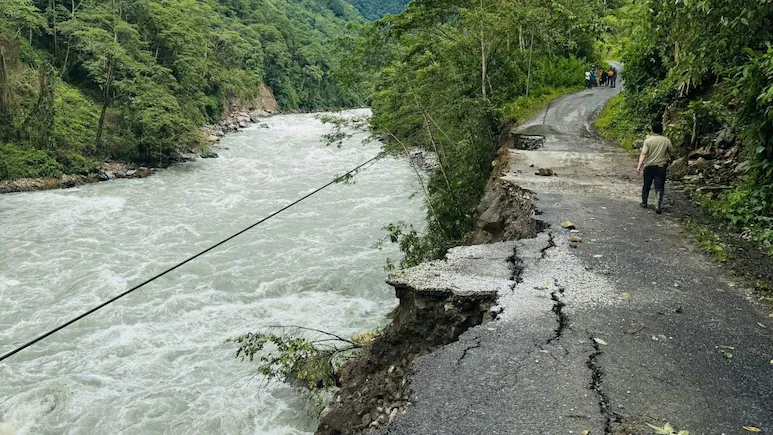A critical bridge in Arunachal Pradesh’s Kurung Kumey district was washed away on Monday following incessant rainfall, triggering a major disruption in connectivity across the remote northeastern region. The collapse of the bridge over the Kumey River has left hundreds of residents stranded, and several villages cut off from essential services, raising serious concerns about infrastructure resilience in the face of worsening monsoon conditions.
The incident occurred amid continuous downpours that have battered parts of Arunachal Pradesh over the past few days. According to local authorities, the steel truss bridge located near Koloriang, which connects several remote villages to district headquarters and the state capital Itanagar, could not withstand the heavy flow of water caused by the swollen river.
The collapse has sparked fears among the local population, many of whom now face restricted access to food supplies, medical assistance, and emergency services. Eyewitnesses reported a loud rumbling sound before the bridge gave way, with some vehicles narrowly escaping the disaster.
District officials confirmed that no casualties were reported, but rescue and relief operations are being complicated by persistent rain and poor road conditions. “The immediate priority is to provide relief materials to the affected villagers,” said Deputy Commissioner Bani Lego. “We are mobilizing teams to assess the damage and establish temporary connectivity.”
The Kurung Kumey district is known for its rugged terrain and challenging topography, making it particularly vulnerable during the monsoon season. Landslides and flash floods are frequent occurrences in the region, and the destruction of key infrastructure only exacerbates the isolation of communities already living on the margins.
Experts have criticized the lack of climate-resilient infrastructure in Arunachal Pradesh, warning that with intensifying climate change impacts, such failures are likely to become more frequent unless preventive measures are taken. Environmental activists also pointed out the need for better water drainage systems, improved early warning mechanisms, and upgraded construction standards for critical road and bridge networks in the northeastern states.
In response, the state government has sought assistance from the Border Roads Organisation (BRO) and other central agencies to expedite the repair process. Temporary bailey bridges are being considered to restore connectivity until a permanent solution is constructed.
Conclusion:
The collapse of the Kumey River bridge in Arunachal Pradesh serves as a stark reminder of the fragile nature of infrastructure in the face of extreme weather events. As the monsoon intensifies, urgent action is needed to ensure that vulnerable regions are not left isolated or unprepared. Both short-term relief and long-term resilience planning must be prioritized to protect lives and livelihoods in the northeastern frontier.



